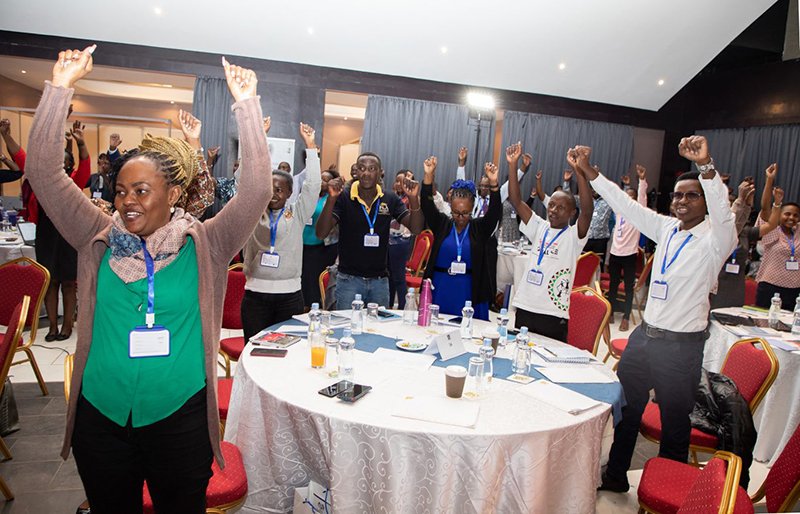Advancing the Youth Health Agenda through Collaborative Learning
“In a world that so often decries the apathy of its youth, we can open our arms to the millions of adolescents eager to contribute their new ideas and bounding enthusiasm.”
This quote by Nelson Mandela aptly captures the goal of the USAID Adolescent and Young People’s (AYP) Best Practice Symposium 2023 which was held from 31st January to 2nd February in Eldoret, Uasin Gishu County.
Prof. Sylvester Kimaiyo, USAID AMPATH Uzima Chief of Party, explains the value of making antenatal clinics youth-friendly
Dubbed “Building Resilience through Collaboration” the three-day forum brought together over 180 attendees from all USAID Implementing Partners (IPs), AYP Champions and senior representatives from the national program including: Dr. Grace Rabut, Pediatric and Adolescent Program Manager – NASCOP; Beatrice Ochieng’, Program Manager Adolescent Health, Division of Adolescent School Health (MOH); Vickie Koske, Adolescents and Young People Program Coordinator – NASCOP; Dr. Anne Kihara, Senior Lecturer, Department of Obstetrics and Gynecology, University of Nairobi and President-Elect Federation of International Gynecologists and Obstetricians (FIGO). Members from the Uasin Gishu County Department of Health and participant representatives spread out across the country also joined the hybrid event to review USAID IP AYP program performance and share best practices in HIV and integration across prevention, family health and treatment programs.
Participants share an energizer moment
The USAID AMPATH Uzima Program hosted the learning event after the Moi Teaching and Referral Hospital (MTRH) Module 4 Pediatric Clinic recorded the highest viral suppression in the country at 97 percent in October 2022. The Symposium brought participants up to speed on best practices around the triple threat campaign and youth-led social accountability, integrated social behavior change, and incorporating digital health and gender-based violence into AYP programming, among other strategies. Learning was further enriched through group discussion sessions, a poster gallery walk and breakout sessions where participants delved deeper into various best practice areas and took away lessons to improve their respective programs.
“My best experience was the chance to present the best practice of Operation Triple Zero (OTZ) Clubs at the poster presentation,” said Sandra Alivitsa, an AYP from USAID Nuru ya Mtoto.
Participants also gathered information and got first-hand experience on best practices in adolescent programming through field visits to the MTRH Module 4 Pediatric Clinic, MTRH Rafiki Adolescent Centre of Excellence, MTRH Antenatal Clinic, Legal Aid Clinic (LACE), and the Centre for Assault and Recovery (CARE) for GBV. Notably, Rafiki Clinic received much acclaim due to the centrality of services and combining social and economic opportunities alongside treatment that have contributed to making it the health center of choice and a safe space for clients.
USAID Implementing Partners from throughout Kenya attended
“When we visited MTRH Module 4 Clinic and saw how they handled the children, it taught me how the little things matter and by doing them it will make your work easier,” added Ian Kinga, a peer educator from Kilifi County.
At the end of the Symposium, IPs and their county officials developed joint plans informed by county specific AYP program gaps for implementation.
There was concurrence that co-creation and capacity building is one of the key success factors for AYP programming in Kenya. “There is still inadequate funding for AYP programming and gaps in skills and training to manage some services. This provides a good opportunity for collaboration amongst partners,” said Professor Sylvester Kimaiyo, Chief of Party USAID AMPATH Uzima.
The Symposium injected fresh energy demonstrating the power of collaboration and the need to embrace the youth as decision-makers as captured by Dr. Edith Apondi, USAID Dumisha Afya Deputy Chief of Party. “When we come together and truly listen to young people, we begin to see them as a resource, an asset and an opportunity to build a better world,” she said.




